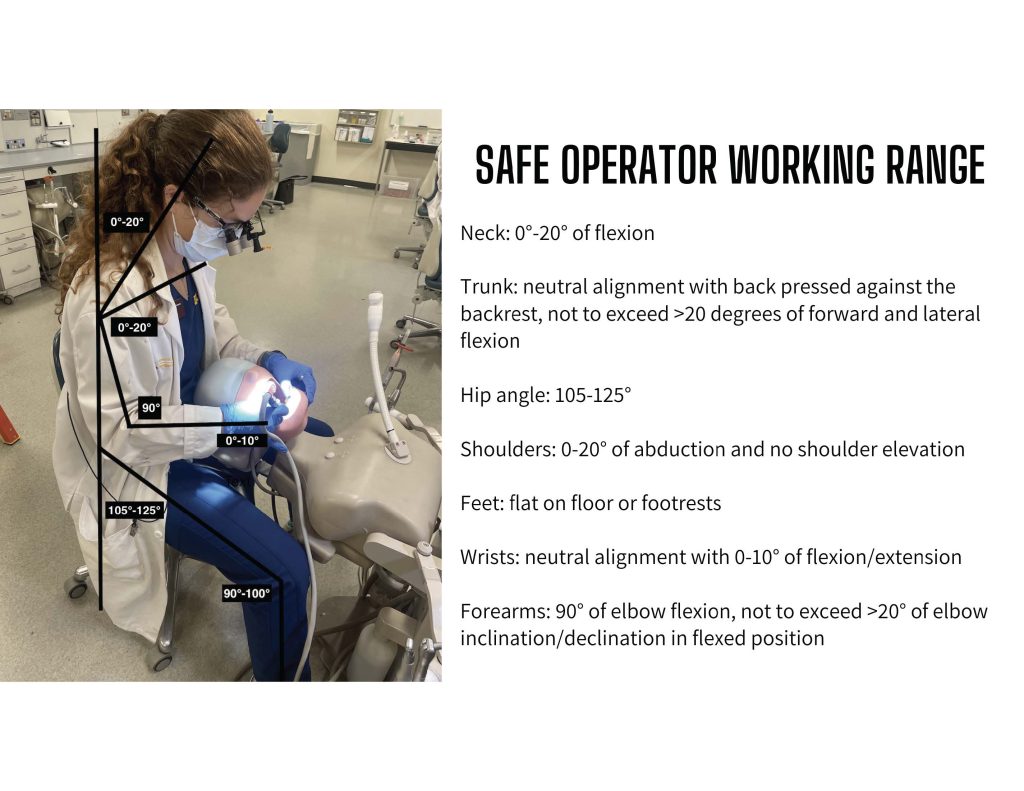Preventing WMSDs and Pain in Dentistry: Tip 1
The previous chapter, What are Work-Related Musculoskeletal Disorders?, provided a description of what work-related musculoskeletal disorders (WMSDs) are. This chapter will focus on the first of five tips to manage some of the risk factors listed in the previous chapter. Additional tips can be found in the following chapters.
Tip 1: Utilize Safe Body Mechanics
The leading cause of WMSDs in dentistry is due to poor use of ergonomic practice and body positioning when treating patients. Research shows that dental students were unaware of safe ergonomic practices during the clinical portion of dental school, leading to approximately 70% of dental students experiencing some form of pain as early as their third year of dental training.[1] Using correct operator and patient positioning can also help the operator reinforce safe body positioning and eliminate awkward and forced neck postures, thus reducing the risk of developing WMSDs.
Below is a picture that was taken from a presentation linked in the appendix which goes into further detail of safe operator working range. It is important to highlight that the optimal working range allows for natural curvature of the spine, limited flexion of the trunk and neck, and for the hip to be angled between 105-125 degrees.
Please note, while the individual in this picture is a DDS student, the principles for safe operator working range applies for all learners enrolled in the School of Dentistry.

- Khan, S. A., & Yee Chew, K. (2013). Effect of working characteristics and taught ergonomics on the prevalence of musculoskeletal disorders amongst dental students. BMC Musculoskeletal Disorders, 14. https://doi.org/10.1186/1471-2474-14-118 ↵
